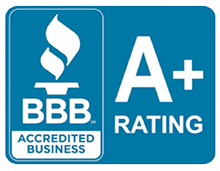
Springtime is an essential time for tree health and growth. If your tree appears to be behind surrounding species like it in terms of growth, there is something you can do to help it along. Likewise, if you have a flowering tree that tends to be a bit of a nuisance, such as trees that produce gumballs or other fruits and seeds that tend to make a mess, you might want a solution to the problem that doesn’t result in tree removal.
Tree injections have become a necessary part of keeping trees healthy and looking great. There are many types of tree injections available. However, the ones prescribed by the certified arborists at Capital City Tree Service in Little Rock, AR include injections with deflowering agents and tree injections infused with fertilizer. We will discuss these types of injections in-depth below.
How Do Tree Injections Work?
Tree injections work by injecting the base of a tree with some syringes with the agent you desire in order to achieve your desired goal. So, if your goal is to fertilize the tree, the tree injection agent might include fertilizers.
Likewise, if your goal is to avoid the flowers or seeds that trees produce from growing and causing a nuisance in your yard, the agent in the tree injections will include a formula to stop the flowering process from occurring without harming the rest of the tree.
There are typically two types of tree injections. One is called a micro injection, and the other is called a macro injection. As the name suggests, micro injections are smaller and use a smaller amount of agents when placed in the tree. Micro injections might be more useful in treating smaller parts of a tree. In contrast, a macro injection uses a larger volume of chemicals, often facilitated in transmission by water added to the agent, to treat a larger part of the tree or the whole tree.
When a tree injection is administered, a small hole is drilled into the base, and then the injection is placed into the hole. All types of tree injections must be administered in this way – by breaking through the protective barrier the trunk and bark provides – so it is important to keep this in mind when you are deciding how to treat a tree problem. The agent in the injection is absorbed into the trunk and travels where it needs to go to complete the process necessary for either providing nutrients to a tree (in the case of fertilizer injections) or keeping flowers and seeds from growing (in the case of deflowering tree injections).
The number of tree injections placed at the base of the tree trunk varies based on the diameter of the tree. Only a certified arborist can determine the number of injections necessary for a tree. If you have a number of the same type of trees in your yard and want them all to receive the same treatment, the number of injections you will need of any given type will increase.
Tree injections have a number of benefits compared to some other tree treatments. For one, because the agents are inserted directly into the base of the tree rather than sprayed, you will not have to worry about children or animals being exposed to chemicals following the treatment. Additionally, the method used for tree injections ensures the agent you are using is administered safely without disturbing the tree significantly.
Types of Tree Injections
Although the arborists at Capital City Tree Service primarily work with two types of tree injections, there are multiple uses for why you might want to use tree injections in your trees. Some other types of tree injections outside of those that have fertilizer or deflowering agents include:
- Fungi treatment – If a tree wound has festered and created an environment ideal for fungi, it is important to treat the problem right away to avoid permanent damage.
- Pest control – Some pests such as borers (Locust Borers, Emerald Ash Borers, Bronze Birch Borers, and Ash or Lilac Borers, to name a few) can be treated by tree injections. The pesticide is injected into the trunk of the tree and spreads throughout, preventing the pests from damaging the tree.
- Tree disease prevention – Tree injections can be used to proactively avoid problems such as tree leaf diseases that can impact the overall health of the tree.
Contact a Little Rock Certified Arborist
If you notice your tree looks less healthy or you are ready to explore using a deflowering agent on your trees, contact Capital City Tree Service today!




